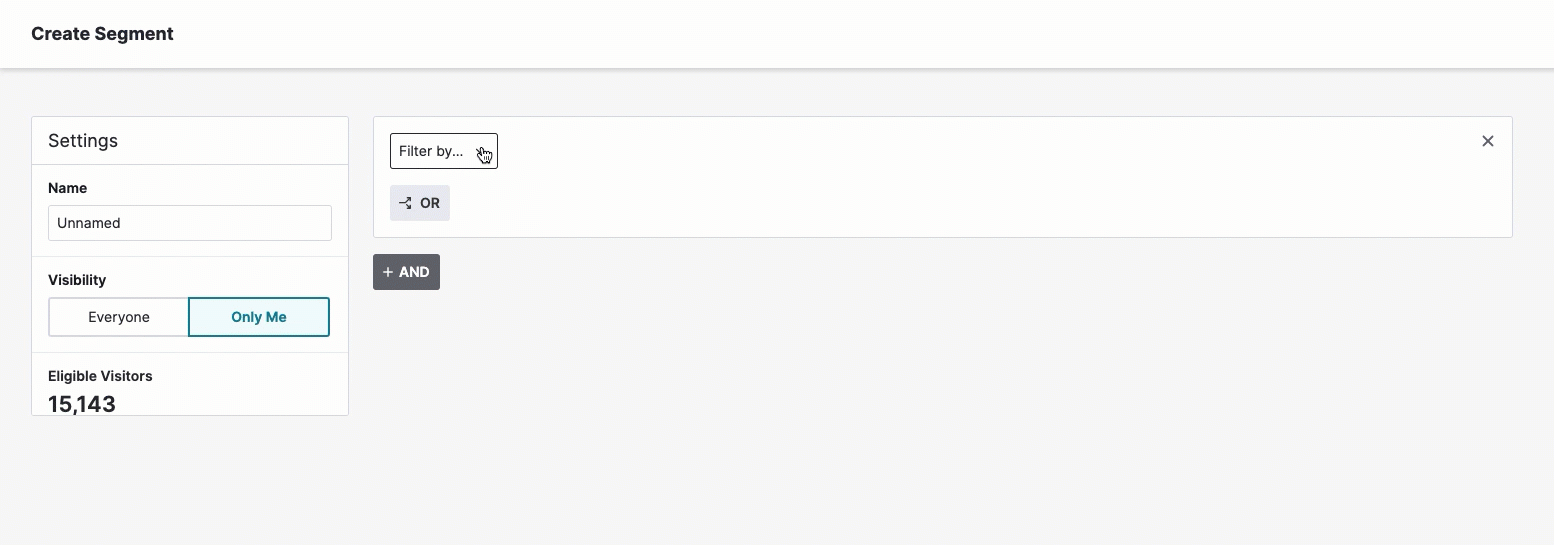“Time is the only finite resource,” so the saying goes. And in today’s economic climate— when companies are looking for ways to do more with less—any tool that can help you work more efficiently is a welcome advantage. That’s why we’re excited to announce the launch of Nested Segments, a new feature in Pendo that allows you to build more sophisticated segments by adding rules to your pre-existing segments.
With Nested Segments, if you need to exclude a group of users (e.g. a do not call list) to deliver an in-app guide, simply reference and exclude that segment in a Nested Segment, in a few easy clicks. Or if you need to recruit users who have never participated in a research study before, instead of sending in-app communications to everyone, you can build a new Nested Segment that references and excludes an existing segment of all prior research participants.

If you’re eager to start building Nested Segments, head over to the Segment Builder or go to Custom Segments in In-app Guides or Draft Segments in Data Explorer. If you’re curious about how Nested Segments can help you deliver more targeted communications and work more efficiently, read on for three key benefits.
1. Confidently include or exclude sets of users or accounts for in-app guide targeting
In-app guides are a powerful and effective tool to communicate feature launches, deliver support, collect user feedback, and much more. In order to effectively use in-app guides, it’s just as (if not more) important to also consider when to deliver the guide, and to whom the guide should be delivered to. Nested Segments can help simplify this process.
Let’s take a look at a real example from Citrix. Responsible for sending a wide range of in-app surveys to their users, product marketers Drew Grantham and Jason Lambert are careful to deliver these surveys at the right time and to the right user cohorts.
“We’re concerned about over-messaging customers with too many surveys such as polls, user research, and NPS surveys. For example, when a customer has recently answered our quarterly NPS, we don’t want to show them a survey for the remainder of the month. It can be an overwhelming experience for our customers to receive too many surveys in a short amount of time and this could negatively impact their engagement with surveys in the future,” says Grantham.
With Nested Segments, Grantham and Lambert have been able to maintain accurate and complete customer exclusion lists that do not have overlapping customers in segments used for survey targeting (e.g. by excluding all customers who are part of the segment used to deliver a quarterly NPS survey). “Now, I’m able to easily figure out who to target by excluding an entire segment without re-creating all of the rules that were in the NPS segment. I simply create a nested segment and reference my NPS segment to exclude those customers, without worrying if the segment is correct,” stated Grantham.
Other teammates have also been able to create their own nested segments by referencing these customer exclusion lists, fueling a more efficient way to deliver a harmonious in-app experience.
2. Share knowledge about commonly used segments created by other teams, all inside Pendo
Many of our customers use centralized or commonly-used segments for guide targeting or analyzing specific user cohorts. The prior example of Citrix’s customer exclusion segment is a perfect example of this. Other examples include a Do Not Call (DNC) list or a segment with customers who only use a particular product or service. Oftentimes, these segments have fluctuating definitions that need to be managed by an admin.
For example, a single user may request to be added to a DNC list, for which the segment admin would then need to update the segment to include this user. Everywhere this DNC list is used would need to be updated with this additional user. With Nested Segments, you can eliminate the back-and-forth process of asking the segment admin for the latest segment criteria and simply share that knowledge by referencing an existing, always-updated segment.
Let’s take a look at another example from Citrix. Grantham and Lambert work together to drive overall product adoption when customers buy multiple products together. To be successful, Grantham drives awareness of her product’s features and functionality that will benefit users of a product that Lambert oversees. To do this, Grantham leverages a user segment already maintained by Lambert that includes customers who have already completed onboarding and are ready to move into the adoption phase in the customer journey. Nested Segments allows Grantham to quickly and confidently leverage Lambert’s customer segment for her adoption efforts, without having to ask Lambert for an entire list of his segment rules.
“Nested Segments allows me to share and democratize information about our segments. If I’m out of the office, I know that Drew can simply reference my customer segment and trust that it’s already correct, without having to wait for me—or worse, review every single rule in my segment,” says Lambert. “It’s like a single source of truth.”
3. Eliminate rebuilding segments from scratch and save valuable time
By allowing you to create complex segments for guide targeting and share knowledge about segments, Nested Segments helps you work faster—eliminating the need to recreate segments from scratch. Instead of examining and copying over every single segment rule, you can simply reference an existing segment—and trust that it’s accurate and complete. “The concept of starting from scratch is gone—and I love it,” says Grantham.
By referencing existing segments, you can also help reduce the total number of segments that often get recreated, simply because a single rule needs to be added or deleted from an existing, similar segment. Overall, this helps you better manage and find the right segments, so you can launch in-app guides or conduct deep analyses. As Lambert stated, “Nested Segments has helped us simplify the total number of segments so everyone can easily find the segment they need, quickly.”
We hope these benefits inspire you to explore Nested Segments and help you work more efficiently. If you’re using Nested Segments at your company in a different way, we’d love to hear from you!


